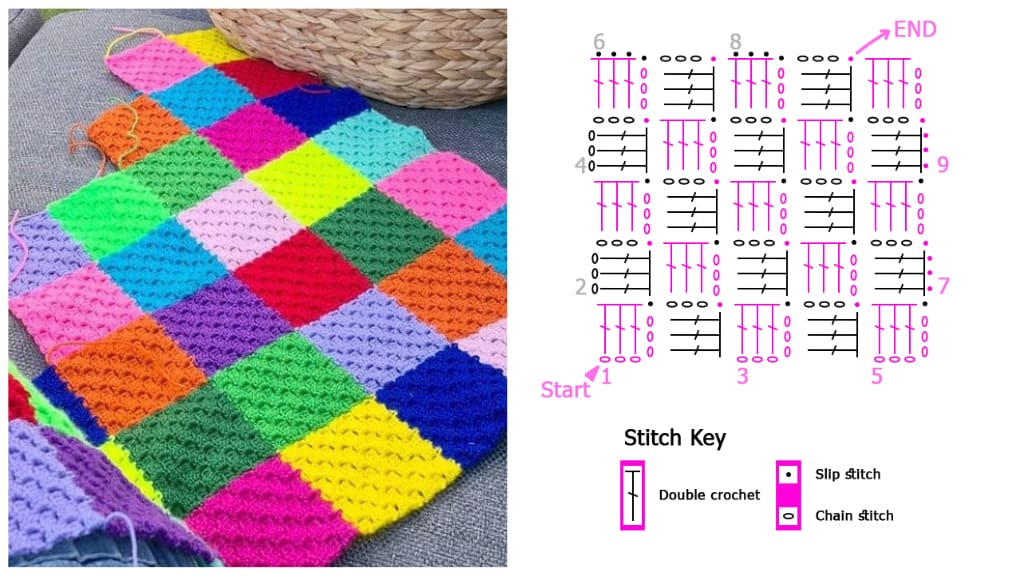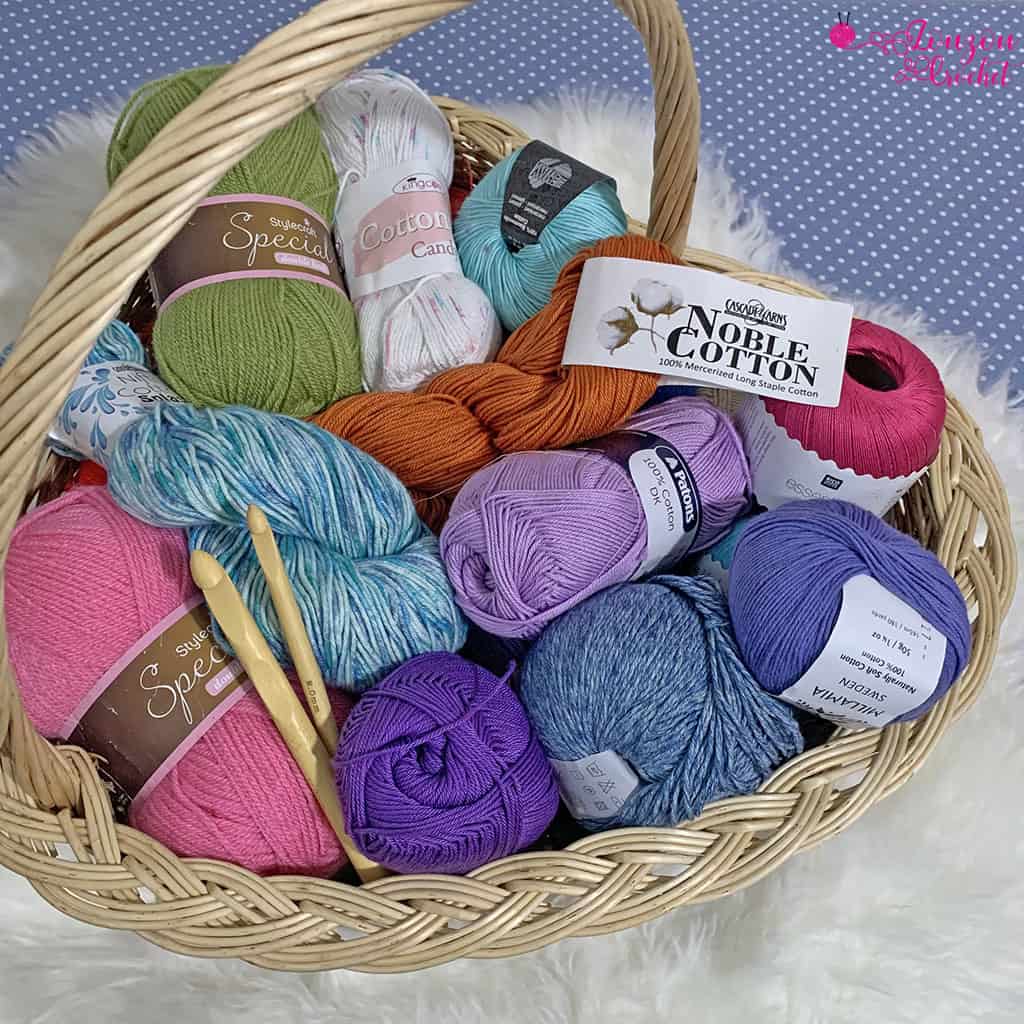

New crocheters and knitters are often intimidated by gauge, the mysterious number expressed in stitches per inch or stitches per centimetre at the beginning of most crochet patterns. Once understood, however, the gauge is the key to getting pleasing results: the item you wanted to crochet, in a size that matches the pattern. Without this, you would have no way of being sure you crocheted an item that would fit correctly. Unlike a sewing pattern, where you begin with a pattern of the correct size and cut the fabric to fit, a crochet pattern tells you how to create the fabric itself in the correct shape. The pattern gauge tells you how to be sure this fabric is the correct size.
Defining Gauge
Gauge is a measure of the size of your individual crochet stitches. For example, if a pattern states a gauge of 16 stitches over 4 inches (10 cm) that means you need to crochet stitches of a size that measures 4 stitches per inch in order to get the finished measurements as stated in the pattern. If you get more stitches per inch, your stitches are too small; fewer stitches and your stitches are too large.
Yarn labels will give a suggested gauge and suggested crochet hook and knitting needle sizes for the yarn. Crocheters vary, however, as each individual holds yarn and hook with different degrees of tension. A relaxed knitter or crocheter may need a much smaller tool to achieve the same gauge as a tight crocheter would with a much larger hook. Use the pattern suggestion as a starting point, then change sizes as needed until you match the pattern gauge.
Matching Gauge
To check your gauge, use the hook size and yarn weight listed in the pattern and crochet a swatch with the number of stitches that should measure 4 inches if you get correct pattern gauge. Be sure to read the pattern carefully. If the pattern says “16 stitches equals 4 inches over double crochet” do not make the swatch using single crochet or treble crochet. Different stitches may have different sizes. Some crocheters are fortunate, and their first swatch measures exactly 4 inches. They can get straight into the pattern immediately.
Many will be a little too big or too small, however. No need to worry! Usually the problem can be corrected by going up one hook size to make slightly larger stitches if your swatch was too small or down a hook size if your swatch was too big. Make another swatch using the new hook size and measure again. Once you have a swatch with the correct number of stitches per inch, you are ready to work your pattern. As long as your stitches per inch match the pattern gauge, the hook size you used does not matter. You may use a 3mm hook while your friend uses a 4mm to create stitches of the same size.
While our focus is on stitch gauge, be aware there is also row gauge: the number of rows per inch. Row gauge is not as important, since ost patterns will tell you to crochet rows until the piece measures a certain length. Thus row gauge is not as critical as stitch gauge.
Respecting Gauge
Isn’t it a waste of time to crochet 4-inch swatches when you just want to make a project? No! That humble swatch may keep you from making a disappointing (and possibly expensive) mistake. Yes, your gauge may have been off by only half a stitch, but if your sweater pattern has 80 stitches, those half stitches will add up to inches of error and your sweater will not fit. For example, a swatch that measures 3 inches instead of 4 inches means a sweater or hat that will be too small by 25%. Unless the pattern is designed to be exceptionally loose, this will likely be too tight to wear!
Adjusting Gauge
If you are beyond beginner status and have confidently completed some crochet projects at the correct gauge, you may decide to intentionally adjust gauge on a certain project. For example, if you have a favourite baby blanket pattern that calls for sport weight yarn and you want to use a heavier yarn, you may follow the pattern directions using the heavier yarn and a larger hook—aware that the finished blanket will turn out larger because of the larger stitches. Scarf patterns are also forgiving if you do not achieve the exact pattern gauge. Your scarf will simply be a bit narrower or wider than the pattern. Once you understand the rules and principles, you can judge if and when you may break a rule on occasion.
Recalculation
Finally, if you are good at arithmetic, you may rewrite a pattern in a different gauge. To do so, you crochet a swatch and measure the stitches per inch. Divide your stitches per inch by the pattern stitches per inch and find the percentage change. Then change all the finished measurements in the pattern by the same percentage. This can work well with simple rectangular projects where size is not critical, such as scarves or shawls. For complicated pattern stitches, garments with many pieces, or items with detailed shaping, it is best to find a pattern in the gauge you need. Calculations can become tedious and mistakes can be made.
In Conclusion
It is helpful to keep a record of projects so you can repeat a pattern without having to experiment so much with swatches. An entry in your notebook would include the name of the pattern, the yarn used (brand and weight) and the hook you used.





